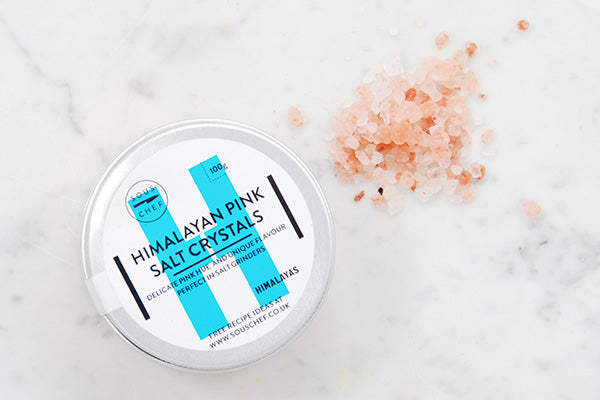What’s So Special About Himalayan Salt?
By Ellie Edwards
-
June 1st, 2020

What is the difference between Himalayan salt and sea salt?
Himalayan salt comes from the foothills of the Himalayas - specifically from the Punjab region of Pakistan. The salt crystals started to form hundreds of millions of years ago when this region was still below sea level. When the Indian tectonic plate collided with the Eurasian plate, the salt deposits were pushed up as the Himalayan mountain range formed.
The difference between sea salt and Himalayan salt is where the rocks are formed. Sea salt occurs as a result of seawater evaporation, whereas Himalayan salt is mined. Himalayan salt can be bought in many forms: large rocks, blocks, plates, crystals, coarsely ground and finely ground.
Himalayan salt is a halite, or rock salt, also known as Sendha namak. These pebble-shaped crystals are ideal for adding to grinders, or crushing in a pestle and mortar to then use as a seasoning for delicate white fish.
Why is Himalayan salt pink?
Himalayan salt gets its rosy hues from trace minerals in the crystals. The main mineral is iron, however calcium and magnesium are both present. These trace minerals don’t affect the flavour or health properties, instead they add a beautiful colour to the salt. Serving Himalayan salt will add a special touch to your dishes.
How do I use Himalayan salt?
Himalayan salt can be used in place of sea salt. Try seasoning soups with it, or sprinkling over tomatoes to bring out their natural sweetness. Larger crystals of Himalayan salt are great for using in a grinder to create finer crystals, or for adding directly to water when boiling pasta.
How do I use Himalayan salt blocks and plates?
Striking Himalayan salt blocks and plates are a fun and interactive way to serve everything from scallops to beef carpaccio and even chocolate truffles. The tight crystal lattice structure of the blocks means they maintain the temperature (hot or cold) for a long time, while the minerals in the blocks slowly flavours and cures the food - great for sushi!
Feeling inspired? Find out how to cook scallops on a Himalayan salt plate, and discover the best Himalayan salts to buy.

About the author
Ellie Edwards is a food writer for Sous Chef. Previously she worked at olive magazine, writing about exciting new ingredients, UK restaurants and travelling the world to find the best cinnamon buns. When she's not exploring the likes of Belize, Kerala and Zanzibar, Ellie loves rustling up a feast in her London kitchen, with a particular passion for porridge, sourdough and negronis.



